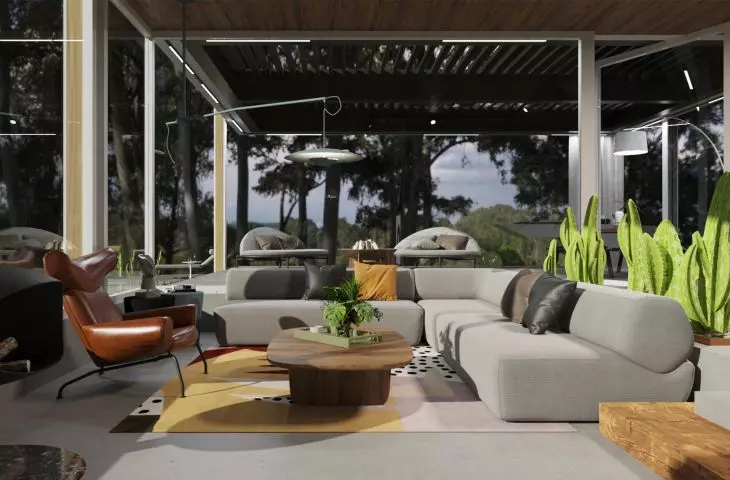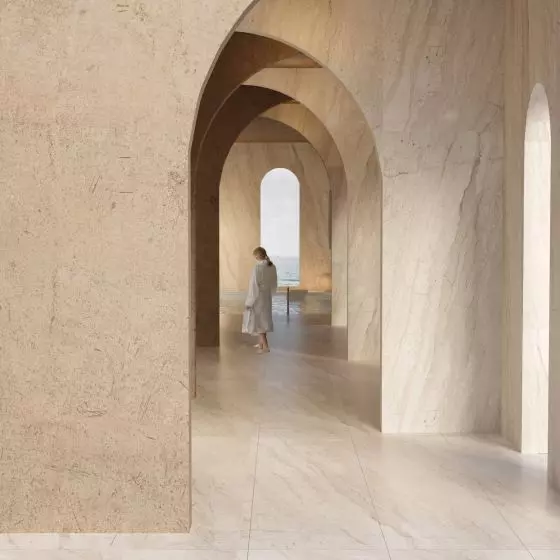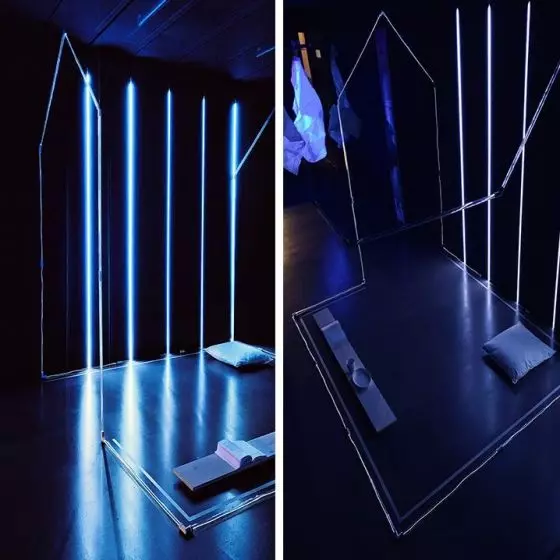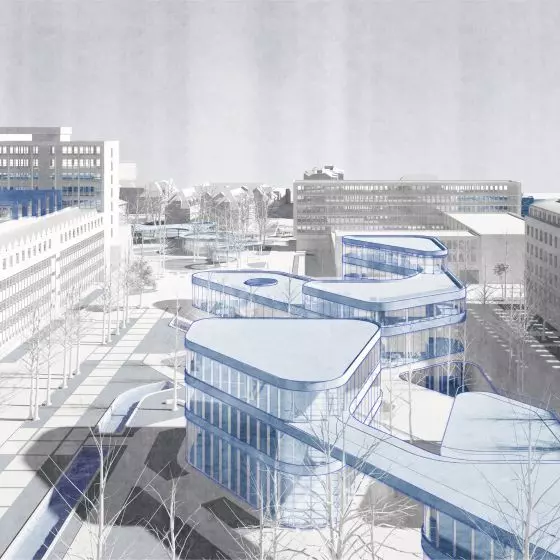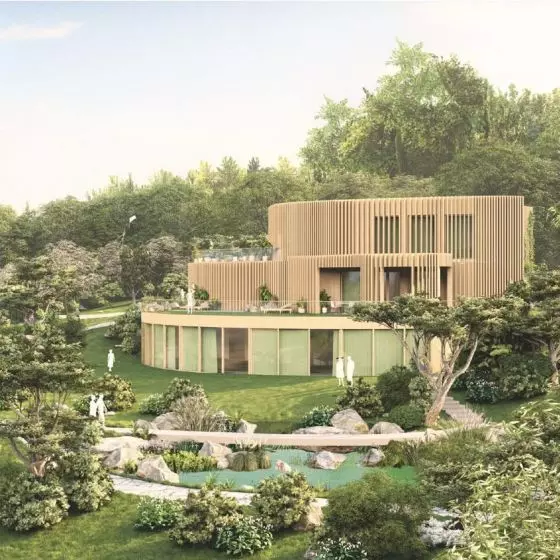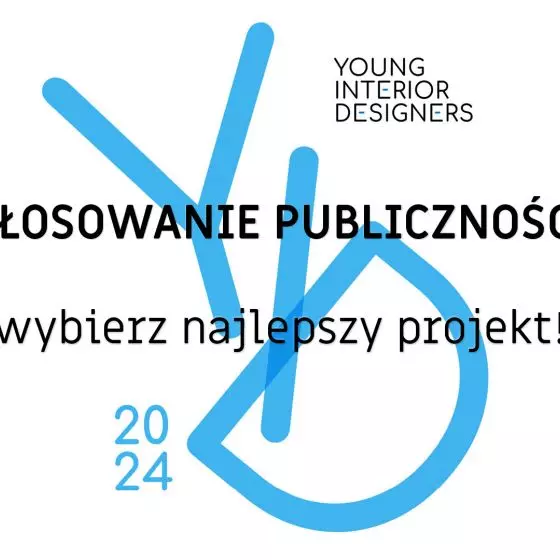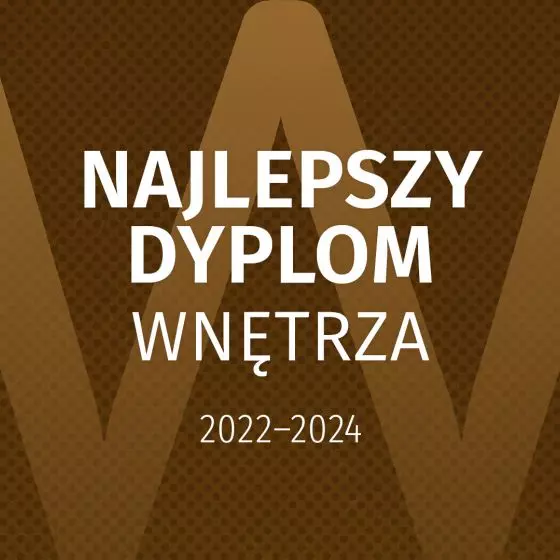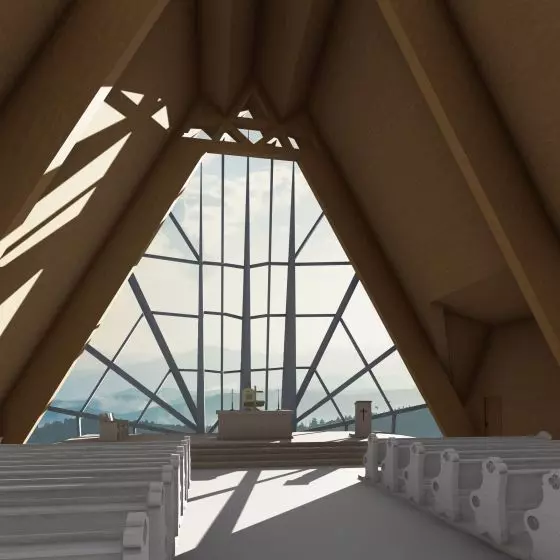Work submitted for the competition
"Best Diploma in Interiors 2022/2024".
The presented work is a design of new interiors for the leisure and recreation house Farnsworth House by Mies van der Rohe. The main idea of the project is to create a comfortable place for relaxation with modern solutions and innovations.
cross sections
© Pola Cołbecka
The interiors are to maintain a modernist character, and the impression of levitation or the use of stone appearing in the spaces of the building refer to the work of Mies van der Rohe. To keep the interiors from being too austere, colors and fabrics were added to enliven and shape the space. To add variety, several treatments have been made to change the massing of the building. The interiors are decorated with works of art - paintings by Wojciech Fangor and Jean-Michel Basquiat were used. The ceiling was covered with wood. The house was furnished with both ready-made furniture and furniture made according to our own design. Furniture and lighting from B&B Italia, De Castelli, Cassina, Flos, Vibia, Foscarini and well-known design artists such as Hans J. Wegner, Franco Albini and Polish architect and designer Oskar Zięta were used.
projection
© Pola Cołbecka
A steel-designed staircase leads to the first floor of the house from two sides. The floor is made of concrete, while the pool is lined with blue marble-textured tiles. Sun loungers, tables and lighting have been placed around the pool.
Farnsworth House
© Pola Cołbecka
On the upper slab is a second terrace and the main part of the building. A barbecue built into a concrete block is available. An opening has been made in the ceiling, in which laths are placed, with the possibility of adjusting their angle and thus controlling shade or sunlight.
A swinging door leads to the interior of the building, which opens to the dining room. Opposite the entrance, a marble green wall can be seen, on which a sheet can be spread to display films from an overhead projector.
dining room
© Pola Kolbecka
The living room is located on the lower level, a confluence that isolates it from the rest of the room. The living room has comfortable sofas and armchairs by Hans J. Wegner, with a fireplace between them. A small office is separated by a bookshelf.
Next to the office area is located the first bathroom, intended mainly for guests. Leaving the bathroom and heading further, the floor returns to a level of 160 centimeters. Before reaching the bedroom, one has to pass through a mobile dressing room, whose closets and openwork walls extend to the sides. This allows you to arrange the space according to your preferences, the bedroom can be open to the other rooms or closed. Above the levitating bed hang inflatable mirrors by Oskar Zięta.
bedroom
© Pola Cołbecka
The bedroom has access to its own bathroom, where a sauna has been installed in addition to the standard equipment. The ceiling of the bathroom is made of glass, also one of the walls is made of frosted glass, separating the bathroom from the narrow corridor leading to the kitchen. At the end of the corridor is placed a sculpture from the Polish sculpture studio "Motka".
corridor and kitchen
© Pola Cołbecka
The wall of the kitchen was entirely covered with kitchen cabinets of various sizes, without handles, opening through "push to open", while opposite are mobile islands on wheels. In them are placed a sink, a cooktop in the countertop, which can also serve as a work surface.
The wall with cabinets, in addition to the household appliances inside, also has a hidden door that leads to the utility room. At the end of the kitchen is the dining area.
bookcase
© Pola Cołbecka
Glass walls can become oppressive to the home user over time, so the building has the ability to adjust the transparency of the glass windows at will. An electric film has been applied to the panes, which changes the transparency to give those inside a greater sense of privacy.
Pola COŁBECKA
Illustrations: © Author






